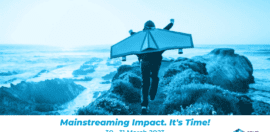Is inequality the new risk benchmark?

30 October 2022 at 9:05 pm
Tackling climate and nature risk is well and truly in the mainstream. Kaushik Sridhar asks if inequality is next.
Disclosing, assessing and ultimately taking action to tackle climate and nature risk has steadily marched into the mainstream of the financial and corporate world in recent years. Guidelines set out by the Taskforce on Climate-related Financial Disclosures (TCFD) and Task Force on Nature-Related Financial Disclosures (TCFD) widely regarded as critical tools for any forward-thinking company’s corporate strategy.
Fast forward a few years from now, could the same trend be repeated for inequality-related risks?
Inequality between and within countries is growing, driven by the legacy of COVID-19, war and uncoordinated policy action. With inflation soaring and real wages falling, the global cost-of-living crisis is hitting the most vulnerable hardest. As policymakers aim to control inflation while minimising the impact on growth, they will need to ensure specific support to those who need it most.
Without question the world’s most vulnerable workers were hardest hit by the COVID-19 pandemic. At the same time, inequality has also worsened the economic and health effects of the pandemic. The crisis has pulled back the curtain on the fragility of our “just in time” economy built for efficiency over sustainability.
The principle of “no one left behind” guided the heads of state and governments when they agreed upon the UN Sustainable Development Goals (SDGs) as the global framework to be achieved by 2030. Despite the recent surge in global demand and supply of sustainable finance, the financing gap for the Sustainable Development Goals (SDGs) has widened, primarily in countries already furthest behind on the 2030 Agenda. Is it just a consequence of the COVID-19 crisis? Or has the system failed to channel sustainable finance to where it is most needed?
The global inflationary crisis is having profound consequences on the well-being of populations around the world, especially in emerging and developing economies. Yet there has been no comparable effort like TCFD for economic inequality. Modern economies have lost sight of the fact that the standard metric of economic growth, gross domestic product (GDP), merely measures the size of a nation’s economy and doesn’t reflect a nation’s welfare.
To help investors and regulators address the problem of systemic inequality and its destabilising economic impacts, a Task Force on Inequality-related Financial Disclosures (TIFD) is being developed, building on existing standard-setting efforts.
Inspired by the successful uptake of the TCFD, TIFD is a systemic risk management framework created through a collaboration among investors, civil society, business, financial regulators, policy makers, and academics to help all market actors know how to reduce inequality created by the private sector.
With an eye towards alignment with the Sustainable Development Goals (SDGs), TIFD aims to launch in 2025 with guidance targets, metrics and thresholds for companies and investors to measure and manage their impacts on inequality, as well as inequality’s impacts on company and investor performance.
While some civil society stakeholders may be sceptical about a “financial” disclosure framework to address their goals and concerns, others see an advantage in working with the private sector. Once developed the TIFD framework can be used by civil society to hold the private sector accountable.
We know now that the story is not so simple – that focusing exclusively on GDP and economic gain to measure development ignores the negative effects of economic growth on society, such as climate change and income inequality. It’s time to acknowledge the limitations of GDP and expand our measure development so that it takes into account quality of life.
Word of caution though: with more than 200 sustainability initiatives or coalitions of actors, the proliferation of sustainability standards not only creates confusion on markets; it also places a heavy burden on countries trying to attract sustainable investors of different origins, for instance by forcing them to comply with different taxonomies. In the absence of harmonised definitions and standards, the interoperability of systems taking into consideration local contexts is a bare necessity.







